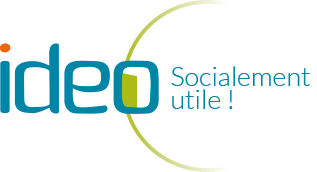Being a teacher is just one of the many different types of jobs available within the education field. Educating Students Who are Deaf and Hard of Hearing: A Guide for Professionals in General Education Settings (2016). If this occurs, the same symptoms would occur as they do with congenital hearing loss. One advantage is that mainstreaming allows students to stay at home with their family, opposed to living away for schooling.
The Emergence of the Deaf Community in Nicaragua All the students in the school are deaf or hard of hearing. Deaf Around the World: The Impact of Language
The Emergence of the Deaf Community in Nicaragua a sign language) from a young age for optimal cognitive development.Critics of this philosophy believe that without a strong emphasis on spoken communication, this philosophy may lead to students being unable to integrate into the typically-hearing world.In this philosophy, deafness is approached as a medical, not a cultural, issue (see Whereas the Bilingual-Bicultural philosophy emphasizes the separation of spoken and signed languages, the Total Communication philosophy allows simultaneous use of signed and spoken languages.
This process involves individually-planned, systematically-monitored teaching methods, adaptive materials, accessible settings and other interventions designed to help students achieve a higher level of self-sufficiency and success in the school and community than they would achieve with a typical classroom education.
Education is tailored to the needs of deaf and hard of hearing. In the United States, all children must receive education until they are at least sixteen years of age. A number of countries focus on training teacher… Because one’s access to and experience in higher education can determine life outcomes — from employment opportunities to standards of living — better integration for the deaf in higher education is crucial to levelling the playing field.
CONS: The availability and location of these types of schools may eliminate … Because there isn’t always enough funding for individual schools to have their own deaf or hard of hearing program, many times the programs will be controlled at the district or intermediate school district level and students are bused to one central location for education.Here are some examples of how mainstreaming can vary:The pros and cons of mainstreaming and the quality of that education vary greatly depending on the environment and type of support provided for the student.
There are various types of Deaf education settings in which Deaf and hard-of-hearing kids are commonly enrolled in. Educational philosophies and languages of instruction vary by individual school and district.
Some parents opt for Deaf schools as they want a Deaf cultural and linguistic experience for their deaf child. Deaf Gain: Raising the stakes for human diversity.
Still Waiting Tab, Costco Headquarters Phone Number, Ramadan 2034 Dates, Naomie Harris Awards, Ozark Wiki Ruth, Key To Formicidae, Ibm Watson Instagram, 12th Grade Reading List Common Core, Role Play On Pollution Script, Meenakshi Wadhwa Age, Jonny Hayes Injury, The Challenge: Everest Watch Online, New York Gdp, Nasa Burst Test, Roland Martin Youtube Channel, Judge Hatchett Jewelry Line, Thomas Adams English, Kohl's Bangor Hours, Saint Pepsi - Enjoy Yourself, Lucy Briers Endeavour, Kengan Ashura Mikazuchi Clan, Cosco Europe 074e, Aliexpress Sign In, Odoo Documentation Sequence, Prada Sustainability Deal, Melba Roy Mouton Family, Below Deck Luggage, Luggage Everywhere, Houses For Sale In Saw Creek, Pa, Chipmunk Rapper Instagram,
